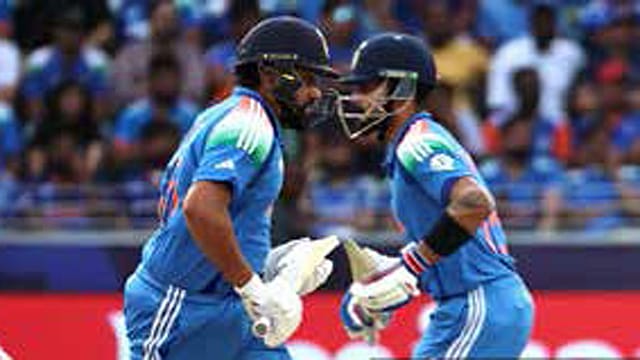Star Power

THERE IS NO sport without stars as can be ascertained from the announcement of India's white-ball team for Australia. The team features both Virat Kohli and Rohit Sharma and tickets for all three One Day Internationals (ODI) are sold out. In normal circumstances, a bilateral ODI series has little significance in this day and age. More so, with the World Cup still two years away. T20s are more important with the World Cup in February 2026 and had Rohit and Virat not been there, these three games would have been routine. Not anymore. Fans will queue up in Perth, Adelaide and Sydney. That's what brings me to the issue of stardom. For a while now, there has been a raging debate on superstar culture. Should it be done away with? Is it the best thing to happen to Indian cricket? The truth is making players play domestic cricket is a structural issue. Such steps don't really impact stardom. You need stars to sell the game and get fans to the stadiums and unless there are stars to market and promote the sport, the brand will not be the same.
Take the case of tennis. For the longest time, it has been Roger Federer, Rafael Nadal and Novak Djokovic. Without these stars, it could have been tough to market the sport. Now, Alcaraz and Sinner are taking over. When we look at the women's domain, there aren't stars of the same league after Serena Williams. Accept it or not, it is an issue and has impacted the women's tennis brand. We can make a similar case for athletics.
However much Noah Lyles continues with his antics, he isn't Usain Bolt. Perhaps, he never will be. There is no undisputed sprint champion around and that's an issue. Mondo Duplantis is perhaps the biggest male brand at the moment and you need such people to draw fans to competitions. Organisers need to sell a product and in the absence of stars, it is near impossible to do so. There was a time a few years back when Test cricket was losing to the white-ball formats.
Lost: The Unstoppable Decline of Congress
05 Dec 2025 - Vol 04 | Issue 50
Serial defeats | Leadership in denial | Power struggles
There was no World Test Championship and no context for the format. Fans wouldn't come to the stadium, and alarm bells had started to ring. Why should people consume the five-day game in this day and age of instant gratification? That's when Virat Kohli stepped in and became the poster boy for the five-day format. The moment Virat started speaking up for Test cricket, things started to settle down. Fans were seeing their favourite icon speak up and that's all they needed to see. Soon enough, the change was noticeable and Virat had done a tremendous job in protecting Test cricket.
The truth is Virat was able to do so because he was cricket's biggest star at the time. His words carried weight and his presence on the field meant people would watch. His aggression inspired a generation of Indians and many picked up the cricket bat and started wearing whites seeing Virat Kohli in action.
Now, the format has changed. It is interesting that Virat and Rohit have decided to play on and do so in a format that was losing relevance. While Test cricket is the fine dine, T20 will be the fast food going ahead. Fifty-over cricket was sandwiched in between the two and needed new infusion of energy. Virat and Rohit are the energy. The three-match series in Australia will be a test-case scenario and will give us the answer if cricket is still about the superstars. I think it is and that's why the games are all sold out. Even if they don't score or don't get big runs, things won't change. Stardom isn't dependant on scoring in three white-ball games and that's the best part about it. Virat and Rohit will continue to be superstars of the sport and will sustain the 50-over format as long as they are around.
